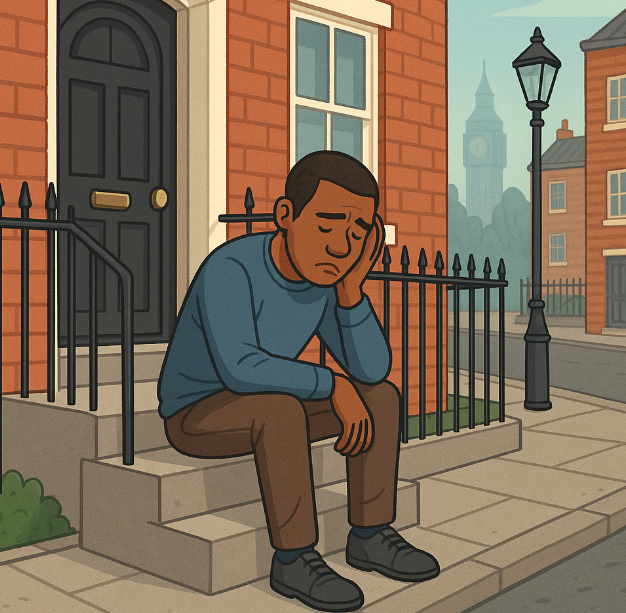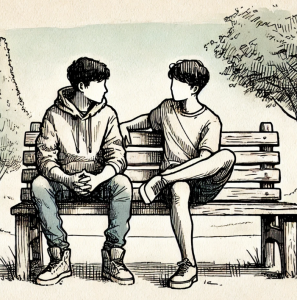
How a Low-Budget Campaign Saved Lives in Barnet
In Barnet, a borough in North London, public health officials faced a grim reality: three-quarters of suicides in the UK are by men, yet only one in four had recent contact with mental health services. For many, help comes too late—or not at all.
In 2021, Barnet launched a bold, low-budget initiative: a mix of digital promotion, outdoor advertising, peer groups, and outreach in male-dominated industries. The aim was simple but urgent—get men talking, seeking support, and connecting with lifesaving resources.
The question: could such a modest, local campaign really make a measurable difference?
What the Study Found
Researchers from Middlesex University used real-time suspected suicide data—an innovative system that tracks deaths far quicker than official statistics—to evaluate the campaign.
Their findings were striking:
- Immediate impact: During the three-month campaign (Oct–Dec 2021), suicide rates in Barnet fell sharply, while surrounding boroughs saw small increases.
- Sustained effect: The decline persisted for up to six months after the campaign, indicating that the message had a lasting impact.
- Lives saved: Estimates suggest 6–9 suicides may have been averted, roughly a 20% reduction in Barnet’s annual rates
- Cost-effectiveness: With a total spend of just £39,355, the campaign cost under £6,400 per averted suicide—comparable to more resource-intensive clinical interventions.
This isn’t just a statistical blip. For families and communities, each life saved represents untold grief prevented and futures restored.
What Made the Campaign Different
The Barnet approach wasn’t one-size-fits-all. It combined multiple entry points into mental health support:
- Stay Alive app promotion: A suicide prevention app tailored with local resources.
- Mass media presence: Digital and outdoor ads reached more than 100,000 residents.
- Workplace outreach: Conversations in construction, transport, and other male-heavy industries.
- Peer connection: Launch of Barnet’s first Andy’s Man Club, where men could talk openly without stigma.
By weaving together tech, outreach, and peer support, the campaign reflected a layered prevention model rather than relying on a single tool.
Why It Matters for Public Health
The study highlights three urgent lessons for health departments and nonprofits:
- Small budgets can still move the needle
Community interventions don’t always need millions in funding. With careful design, £40,000 reshaped a borough’s suicide trajectory. - Real-time data unlocks evaluation
Traditional suicide statistics lag by a year or more. Barnet’s use of real-time surveillance shows how timely data can drive rapid learning and accountability. - Multi-pronged outreach reduces blind spots
Men in particular often avoid clinical services. Campaigns that meet people where they are—on job sites, buses, or peer groups—bridge that gap.
Barriers and Open Questions
Of course, the study had limitations. It wasn’t a randomized trial, so causality isn’t ironclad. A high rate of suicides just before the campaign also complicates interpretation—it’s possible Barnet’s rates were returning to baseline.
Still, even under conservative assumptions, the effect was sizeable. The real challenge now is replication: will other boroughs or counties see the same results, or was Barnet unique?
What’s Next for Communities
For public health leaders, this case offers both inspiration and caution.
- Policy implications: Local governments might explore similar low-cost, multi-component campaigns as part of broader suicide prevention strategies.
- Funding priorities: Grants could prioritize grassroots, VCSE (voluntary, community, and social enterprise) partners who can deliver fast, context-sensitive interventions.
- Workforce considerations: Training for frontline workers in male-heavy industries could extend these protective effects further.
Join the Conversation
The Barnet study sparks important questions for the field:
- How could your community replicate a multi-pronged, low-cost prevention effort?
- What barriers—political, financial, or cultural—would stand in the way?
- Does this research challenge assumptions about how and where suicide prevention resources should be invested?
Barnet’s story reminds us: even with limited resources, communities can bend the curve on one of the most urgent public health crises of our time.



